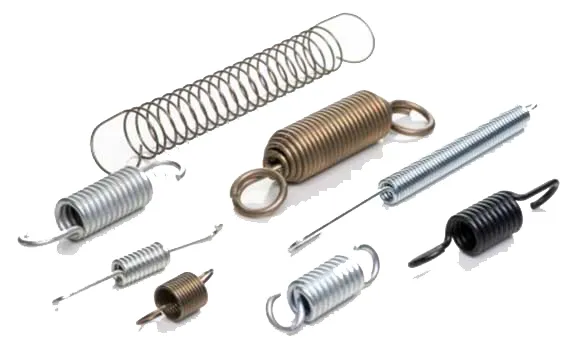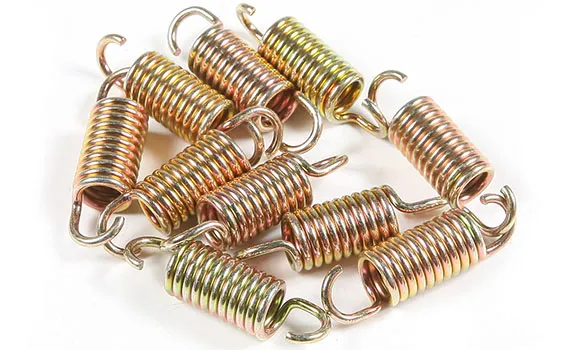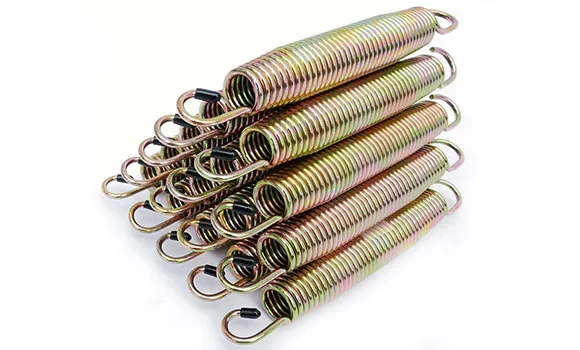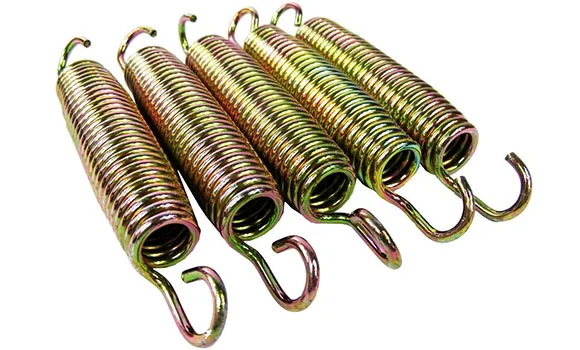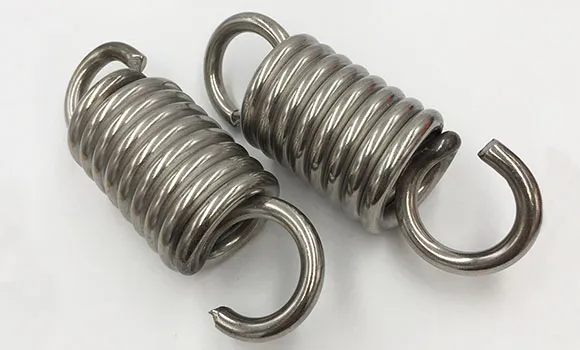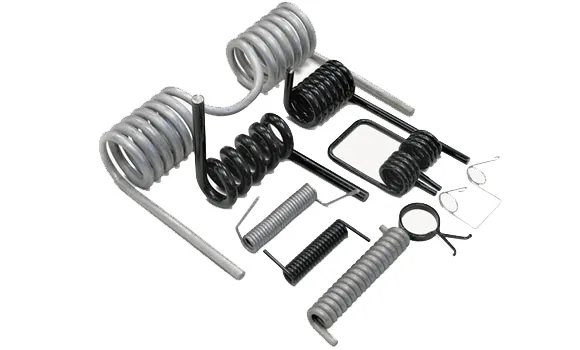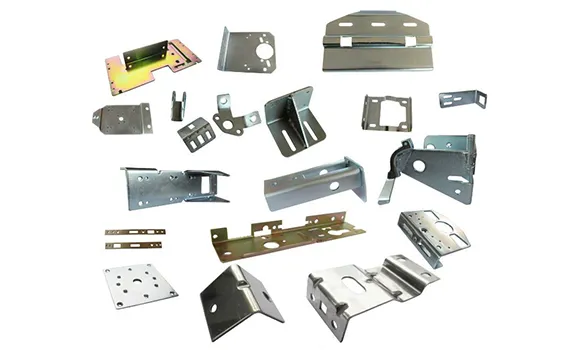Extension springs are designed to absorb and store energy as well as create a resistance to a pulling force. It is initial tension that determines how tightly together an extension spring is coiled. This initial tension can be manipulated to achieve the load requirements of your particular application. All extension springs are wound with an initial tension force that offers a small deflection load for secure installation “holding”. The initial tension is equal to the minimum force required to separate adjacent coils. Each spring is of the constant diameter type with a variety of hook/loop styles. Spring Anchors are also available.
Characteristics
Extension springs are a type of tension spring. Helical extension springs store energy and exert a pulling force. Extension springs differ from compression springs in that they do not have a solid stop to prevent overloading. For this reason, they are designed with lower stress levels. Typical applications include balance scales, trampolines, garage doors, dock levelers, farm machinery and various types of spring tensioning devices.
Dimensions Measurement Guide
- Hold the spring in one hand, and the calipers in the other hand.
- Place the calipers across the outside coil, either at the end or the center of the spring. This is called the Outside Diameter (O.D.).
- Place the calipers on the wire at one end of the body coil of the spring. This is called the Wire or Material Size.
- Place the calipers (or tape measure) on the full length of the spring, inside the hooks. This is called the Length (L.I.H.). (see diagram for example)
Materials
The highest grades of spring wire are used when fabricating our springs. To create cost-effective warehousing of our stock spring inventory for our customers, we offer material certification as custom springs only. Certifications of conformance for geometric tolerances set by the Spring Manufacturers Institute (SMI) are available for our stock springs upon request.
The term "spring steel" is a stock inventory term covering music wire, hard-drawn(MB) wire, and oil-tempered wire. Additionally, our extension spring materials include stainless steel (300/400/600 series), beryllium copper, and phosphor bronze.
Tolerances
Tolerances for extension spring rates depend upon the body-diameter to wire-diameter but are usually +/- 10% and +/- 5% on the diameter. The initial tension is much more difficult to control and is offered as a reference value only.
Ends
The ends on our extension springs are the common machine-made hook and full-loop configurations. The hooks or loops may have an across center transition of the last coil before forming the hook or loop. The angle between hook/loop planes (end position) is random. If you need a specific end configuration, it is best to contact our custom spring department.
Finish
Our extension springs contain a selection of commonly requested finishes:
- Zinc
- Black Oxide
- Passivated (upon request)
- None (can be plated upon request)

